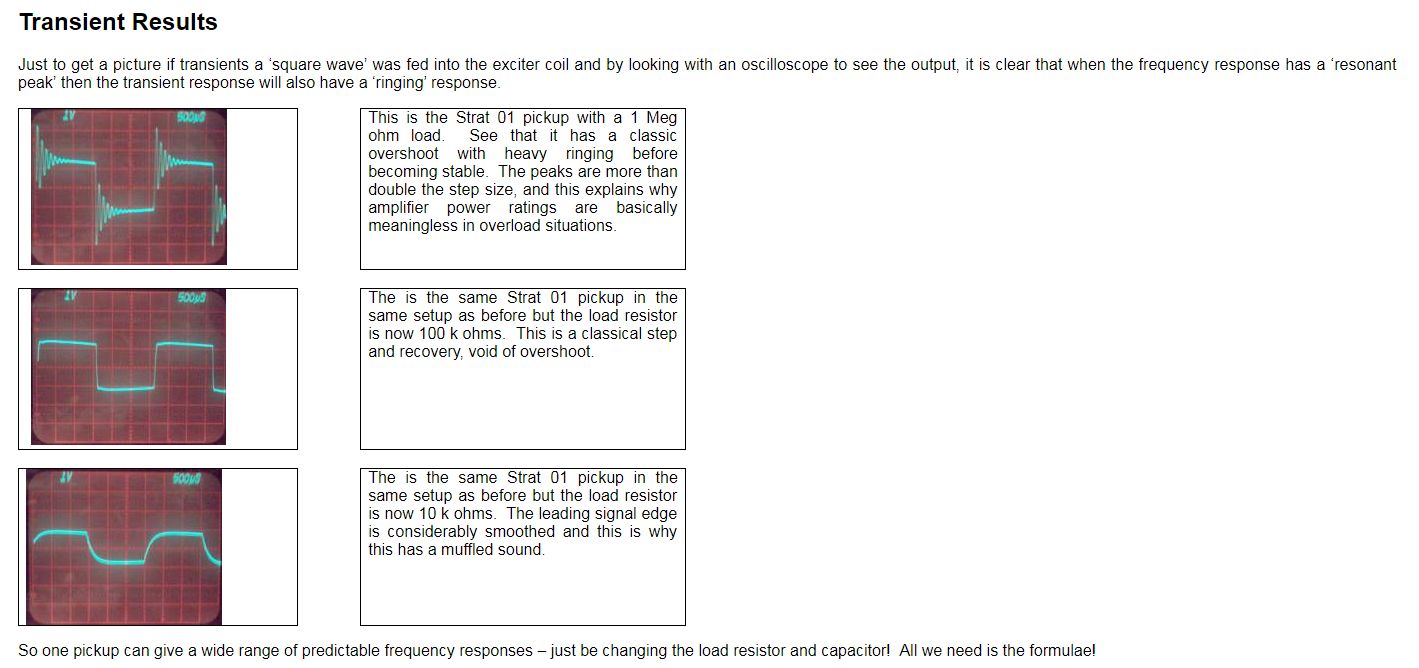Malcolm Moore has done extensive research into guitar pickups.

The high-bandwidth requirement of guitar amplifiers is a crucial aspect that impacts their performance and the overall sound quality they deliver. In the context of guitar amplification, “bandwidth” refers to the range of frequencies the amplifier can accurately reproduce. For electric guitars, this encompasses not just the fundamental frequencies produced by the strings (which range approximately from 82 Hz for the low E string to about 1,300 Hz for the highest frets on the high E string) but also a wide spectrum of harmonics and overtones that extend well into the high-frequency range.

Why High Bandwidth is Important for Guitar Amps
1. Harmonic Content: Electric guitar sound is rich in harmonics, which can extend up to the 10th harmonic and beyond. These harmonics are crucial for the characteristic timbre and brightness of the guitar. A guitar amplifier with a high bandwidth can accurately reproduce these harmonics, ensuring that the guitar’s tone is full and rich.
2. Distortion and Overdrive Effects: Many guitar styles rely on the use of distortion and overdrive, which significantly increase the harmonic content of the signal. Distortion generates additional harmonics and intermodulation distortion products, which require a wide bandwidth for accurate reproduction without aliasing or unwanted artifacts.
3. Dynamic Range and Clarity: High bandwidth ensures that the amp can deliver clear, detailed sound across the entire frequency spectrum. This is important for maintaining the clarity of the guitar signal, especially when complex chords or fast passages are played. It also helps in preserving the dynamic range of the performance, from the softest notes to the loudest strikes.
4. Feedback and Sustain: The interaction between the guitar and the amplifier, particularly at high volumes, can lead to feedback, which guitarists often use creatively to produce sustain and controlled feedback tones. A wide bandwidth helps in managing these effects more precisely, allowing for a broader range of expressive possibilities.
Technical Considerations
– Speaker Response: The frequency response of the speakers used in the amp contributes significantly to its overall bandwidth. Speakers must be capable of reproducing both the low-end punch and the sparkling highs without significant roll-off.
– Circuit Design: The design of the amplifier’s circuitry, including the preamp and power amp sections, affects its bandwidth. High-fidelity amplifiers often employ circuit designs that minimize phase shifts and attenuation at the frequency extremes.
– Component Quality: The quality of components used in the amplifier (e.g., capacitors, resistors, and inductors) can influence its frequency response. High-quality components are essential for maintaining a flat response across the desired bandwidth.
Conclusion
The high-bandwidth requirement of guitar amplifiers is fundamental to their ability to accurately reproduce the complex, richly harmonic sound of the electric guitar. Whether for clean, undistorted tones or for heavily overdriven sounds, a wide bandwidth ensures that the amplifier can deliver the full sonic spectrum of the guitar, contributing to the musician’s expressive palette. Understanding and optimizing bandwidth is, therefore, a critical aspect of amplifier design and selection for guitarists seeking the best possible sound.